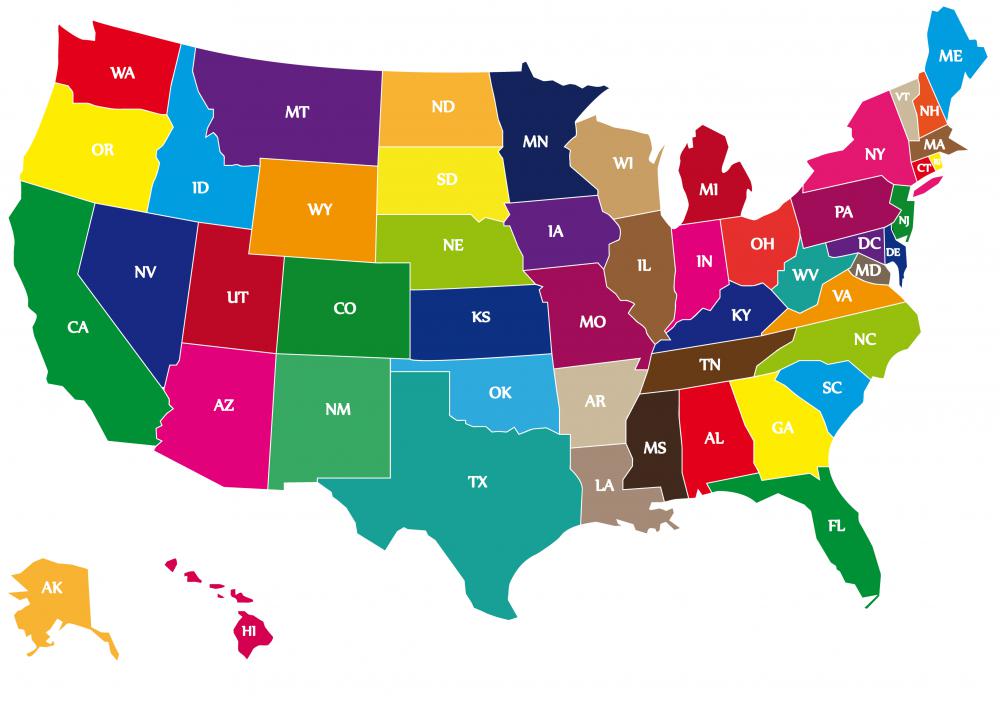At HomeQuestionsAnswered, we're committed to delivering accurate, trustworthy information. Our expert-authored content is rigorously fact-checked and sourced from credible authorities. Discover how we uphold the highest standards in providing you with reliable knowledge.
What Are the Common Signs of Sinkhole Damage?
Perhaps the most obvious sign of sinkhole damage is a depression in the ground, normally circular in shape; these can range in size from the barely noticeable to the absolutely huge, though they often have a tendency to grow from first formation. In open fields or empty lots these depressions may not cause damage, but near homes and other structures they can cause significant losses. People who notice unusual depressions in their yards or near their properties should usually get a professional evaluation. Sometimes sinkholes happen under existing structures, too, which can make them much harder to detect. Cracks in the interior walls are some of the most common signs of damage in these cases, and in extreme scenarios the walls begin to separate from the ceiling and the building starts to crumble from within. Outdoors, sinkholes can cause portions of roadways and highways to collapse and essentially be swallowed into the ground, which can cause major hazards for drivers.
Understanding the Sinkhole Phenomenon Generally

A sinkhole is a depression, or hole, in the earth's surface. It is generally caused by the eroding or dissolving of the limestone layer of rock just under the surface of the land. These holes can occur almost anywhere, but they tend to be most common in ground that is saturated and mostly acidic; over time, the acid in the groundwater and soil wears away at the limestone causing it to fall away and allowing the surface layer to essentially get pulled downward. In general sinkholes are very difficult to reverse, though they can often be mitigated provided they're small and discovered quickly. Many insurance companies provide sinkhole damage coverage, but early detection is still usually important in order to minimize losses.
Ground Depressions
Shallow pits or indentations in the surface of the soil are usually some of the first signs of sinkhole damage on open land. People often notice their fence posts sagging, for instance, or may observe pooling water or the formation of a circular round pond where none was before. Deeper sinkholes may also cause vegetation and plants to start wilting away on the surface; this happens as the sinkhole pulls moisture downward. In the most extreme cases, giant pits or cracks burst open on the surface.
Wall Cracks
One of the first signs that a sinkhole is forming underneath a structure is a crack on wall of the building. Cracks often appear first on the exterior walls, but depending on how the building is sided they may not be immediately visible here. Interior fissures are usually a lot easier to notice.
Sinkhole-related cracks on the exterior usually run diagonally from the bottom center of the wall and extends to the top of the wall just under the gutters. It is sometimes referred to as a stair step crack because it normally looks like a flight of stairs going up the side of the building. In brick or block homes, separation of the mortar may eventually occur along this line. A crack of this nature is generally a tell-tale sign that there is an undue burden on the home's foundation.
On the interior, cracks typically appear just above openings, such as doors or windows. They usually run from the ceiling to the top of the door or window frame. This may result in doors and windows that fail to open and close normally. This type of crack usually indicates stress on the building's walls and ceilings.
Building Separation
Walls and floors separating from one another is also a possible sign of sinkhole damage. This could eventually lead to floors that slope or have dips in the center of a room. Homeowners may be able to feel a floor buckling when walked on. When floors and walls begin to separate, the home is no longer safe to inhabit and will likely need major repair work.
Concerns for Drinking Water
Pipe damage is another serious issue related to sinkholes, but it can be harder to diagnose at first. Pipes that burst and begin spewing water are, of course, somewhat obvious, and in major urban areas sinkholes sometimes impact water mains, which can lead to massive flooding. Water quality issues are also problematic on a smaller scale, though, particularly in communities that depend on well water or other water drawn directly from an aquifer. Sinkholes can quietly pollute groundwater supplies very quickly, which can cause widespread problems for the homes and businesses nearby.
AS FEATURED ON:
AS FEATURED ON:











Discussion Comments
Just how common are sinkholes, and even more so, how common are they in households?
I've never had problems with sinkholes before, but I've seen them, and they can be pretty bad. I like how the article notes that if a home has damage, then it should be taken care of as soon as possible. The longer you wait for to take care of the issue, the bigger it will get, no pun intended. Has anyone here ever had problems with sinkholes? And if so, how soon did you take care of it?
Sinkholes aren't to be confused with potholes, which are generally holes in the ground (namely the street) that can cause damage to your car and to your tire. They're not as dangerous as sinkholes, but they should be avoided at all costs when driving on the road. I remember running into a few potholes, and I nearly had to replace my tires. Also, unlike sinkholes, which (as the article states) are caused by the eroding of rock, potholes generally form from bad weather conditions, and the "wear and tear" of the road.
Post your comments